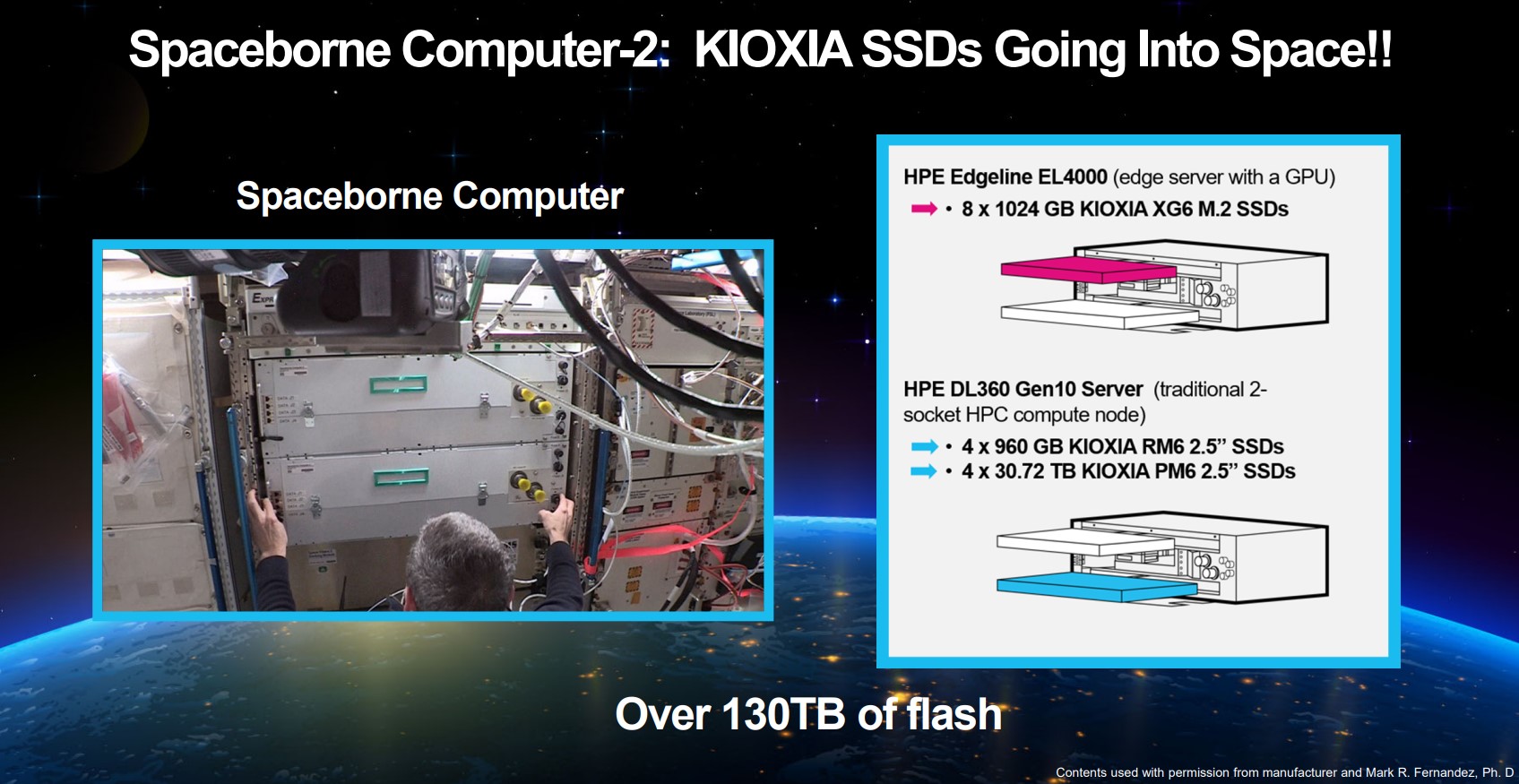In a collaboration with Hewlett Packard, Kioxia (Formerly Toshiba Memory Corporation) now has its M.2 and SAS SSDs in use on the International Space Station as a part of the Spaceborne Computer-2 (SBC-2) program. The HPE Edgeline EL4000 will be using eight 1TB XG6 M.2 SSDs and the HPE DL360 Gen10 server will have a combination of four 960GB RM5 2.5-inch and four M6 2.5-inch SSDs with an impressive 30.72TB storage space.
This is effectively an upgrade to the HPE SBC-2, which was launched in 2021, abd delivered to the station via Northrup Grumman’s 20th re-supply mission rocket. Kioxia SSDs is a sponsor of the SBC-2 program and also had its SSDs used in this system last year.
This computer is the first in-space commercial edge computing and AI-enabled system to be used on the ISS. The primary objective is to have advanced computing and reduce dependency on mission control on Earth. With such systems, the astronauts can process data on the ISS rather than having to send the raw data back to Earth and wait for it to be analyzed and sent back. Hence having such an array of SSDs, including a set of four 30.72TB drives is crucial.

Primary Use of the SBC-2 Computers
The SBC-2 will used for multiple workloads, but is already used for making progress in health, image processing, natural disaster recovery, 3D printing, 5G, AI and other applications. Hence, it’s no surprise that flash-based SSDs are preferred over traditional HDDs, especially with the PM6 series having up to a 30.72TB storage capacity variant.
HPE worked with NASA on its previous Spaceborne computer with the same intent to process data on-site. Therefore, there’s no surprise HPE is used in its SBC-2 program.
As space exploration continues to advance, the need to have reliable and quicker on-site computers and storage. Hence it’s no surprise that space agencies like NASA would collaborate with HP Enterprise to have purpose-built systems to work on the station and have it routinely maintained and upgraded.

Wanda Parisien is a computing expert who navigates the vast landscape of hardware and software. With a focus on computer technology, software development, and industry trends, Wanda delivers informative content, tutorials, and analyses to keep readers updated on the latest in the world of computing.


